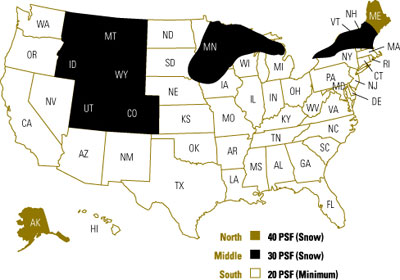

Zone 3 mobile home wind rating windows#
Make sure the windows are vinyl, Low-E windows with welded corners.Contrary to what many believe, adding extra "straps" or anchors does not change the wind rating of a manufactured home. The shorter the overhang, generally the lower the wind rating. The width of the eave (roof overhang) is a quick indicator of the wind load construction of a manufactured home. There are specific requirements for construction regarding wind loads. No manufactured (or site-built) home is tornado or stormproof, but some of the better-built homes are built to withstand 140+ MPH straight winds.Wind Zone 3 (110 miles an hour) is in a very small area on the coastline. Wind Zone 2 (100 miles an hour) is within 90 miles of the coastline. Wind zone 1 (basically, winds of up to 70 miles an hour) covers most of the continental US. The Wind Zone of a house defines the wind that it is supposed to be built to withstand.If available, ask for the "crossover duct" to be built into the floor (on double and triple wide homes)-not flex duct under the home, which is potentially exposed to the elements and animals.There is one manufacturer based in Oklahoma that builds every double wide home Energy Star rated. Be careful when this is being pitched to you. They are allowed to keep their factory Energy Star rated as long as they build at least one qualifying home per year at that location.

Some manufacturers have "Energy Star" construction or "Green" construction available, but very few actually build their homes to these standards. This label is usually found in the kitchen or utility room. You can see the energy rating on the HUD label that is posted (by law) in every home.
Zone 3 energy rating is the highest available in the manufactured housing industry. Avoid polypropylene plumbing (the gray pipe found in older manufactured homes)! Approximately 1:10 homes with PVC or CPVC will have a water leak upon setup after transport, while the number is closer to 1:100 with Pex. It has a much better performance history than PVC or CPVC. Third-generation Pex plumbing is the best way to go for plumbing. Ceramic showers are fine but require more maintenance. Make sure that the connection "spread" is a standard residential size on all sinks and fixtures. Avoid plastic or fiberglass sinks in the bathroom and kitchen if possible. Request china, ceramic, or stainless steel sinks. They can be added later if not available at purchase. Ask for water shut-off valves at every sink and toilet. Avoid the non-mortising hinges if possible. All interior doors should be 1-3/8" thick. This will avoid very high replacement costs. Confirm that the exterior doors are 80" tall (residential height) and are 1-3/4" thick (residential thickness). Make sure the door trim and baseboards are real wood (not paper-coated MDF or plastic). Some Amish-built homes offer a smooth finished Sheetrock. Most manufacturers use a light to medium texture on the walls. Real Sheetrock allows for future maintenance, and you can paint or paper at will. Ask for 1/2" taped and textured Sheetrock throughout. Also, make sure the carpet runs wall to wall (is not stretched under the wall) and is secured with a tack strip (not stapled at the edge). Ask for a minimum of 5# rebond padding under the carpet. Make sure the carpet is 100% continuous loop nylon with stain resistance. Check to make sure that all of the floor joists and walls (interior and exterior) are framed 16" on center. Avoid particle board flooring (Nova Deck) at all costs! Plywood is the best flooring, and OSB or wafer board is acceptable. Oddly enough, some of the very cheaply made homes use longitudinal floor joists (running the length instead of the width of the home). Floor joists that run in the opposite direction of the structural I-beams. This will result in a flat plate-line while the home is in transit, avoiding much of the damage that occurs during transport. Here's a list of some things you should look for or request in a manufactured home. Manufactured Home Features You Should Look For or Request 
Here are things you need to look out for if you are considering a mobile home.







 0 kommentar(er)
0 kommentar(er)
